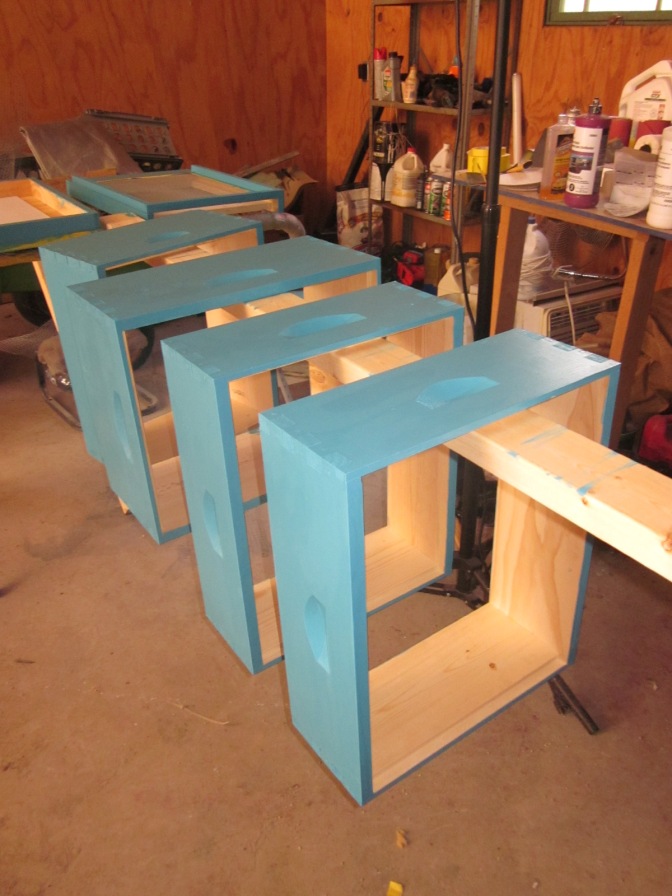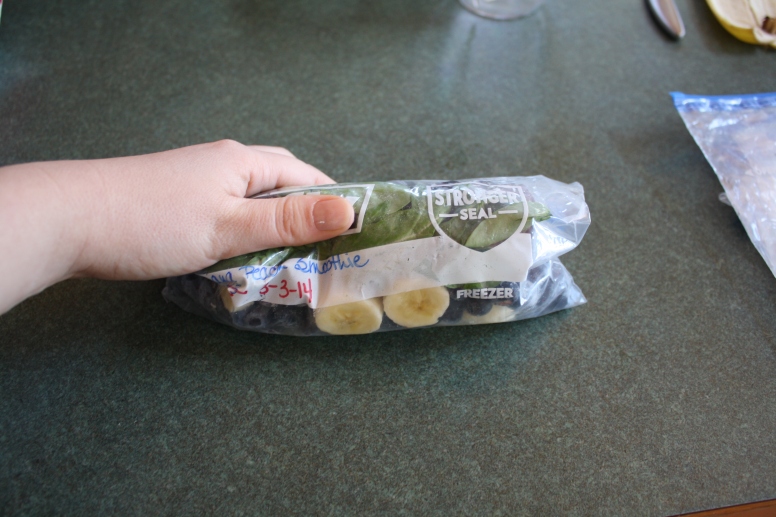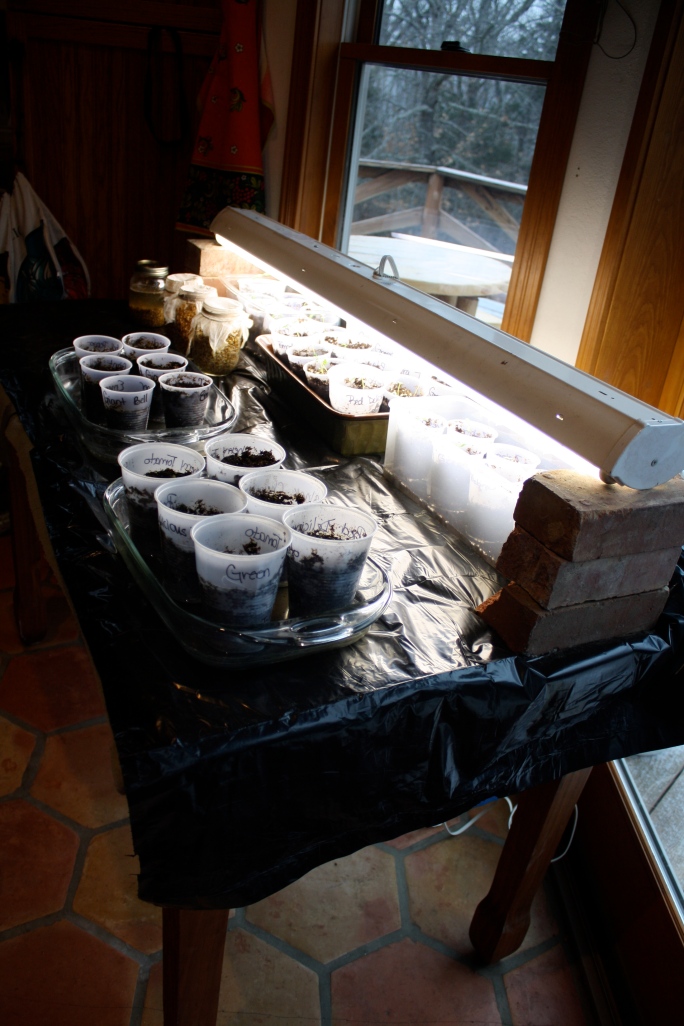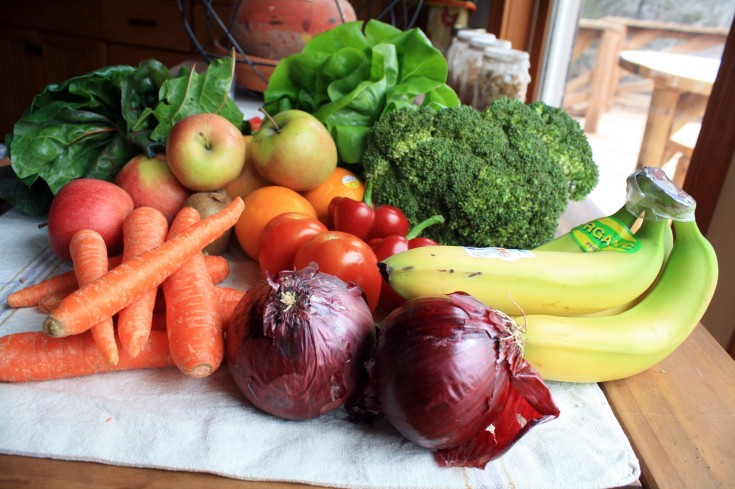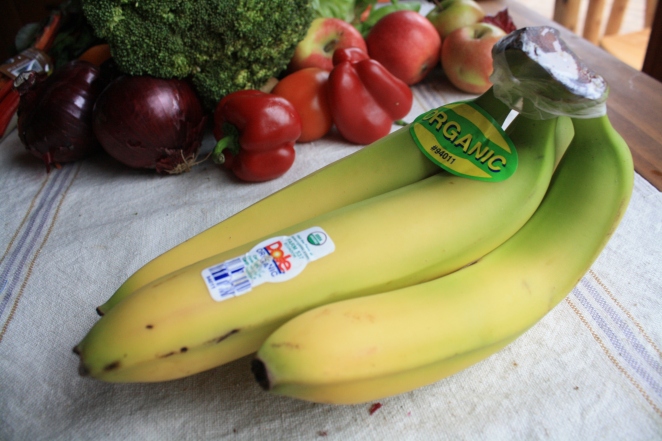Hello my long-lost friends!
You probably thought I’ve disappeared off the face of the earth. Not yet. I’ve just been busy as a bee offline working on lots of different projects. When I started my blog, I thought I’d be able to have one neat little blog post for each little thing I was doing around the house. In reality, that doesn’t happen, for me anyway. So here’s a little recap of what’s been going on behind-the-scenes at Hens and Honey.

My indoor seed starting station is doing wonderful. I have over 20 heirloom tomatoes growing well. My bell pepper plants didn’t do as well as I’d like, but I have a few of those still trucking along. I also have some broccoli rapini and I planted several marigolds.
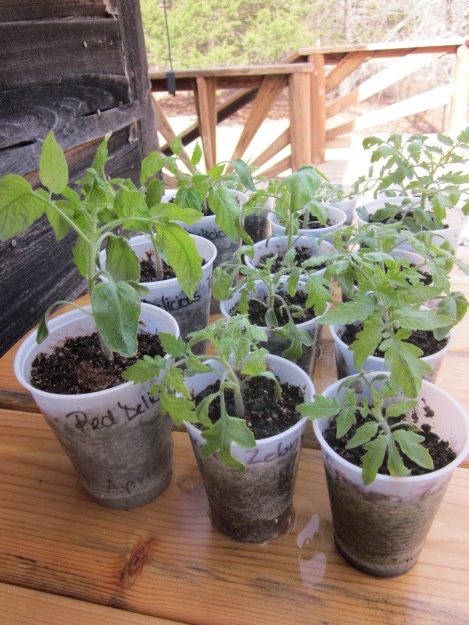
On sunny days, I’ve been bring the plants outside for some real sunshine and breeze (which is supposed to strengthen the stalks). They seem to like it.

I recently planted two window boxes of lettuce and two window boxes of spinach. They spend their days on the sunny south-facing back porch. I planted my herbs this way last year, and I had a lot of success.

So far, so good. Here’s my lettuce.

Here’s the spinach. Lookin’ good.

Here are my raised beds that I established last year. This was about the extent of my garden last year, because my mom grows a monster garden that I help with and harvest from. it worked really well for cool-weather, shaded crops, but it didn’t work as well as I’d liked for my tomatoes and peppers. The cattle pannels were perfect for growing beans on! So, I planted these beds with onions, peas, lettuce, greens and spinach.
 The laundry baskets are new this year. I decided to try to grow my potatoes in them instead of directly in the earth. Here’s the post that inspired my idea: http://www.vegetablegardener.com/item/5215/growing-potatoes-in-a-laundry-basket. At the end of the season, you’re just supposed to dump the dirt out and the potatoes will fall out too. No digging. We’ll see how it works.
The laundry baskets are new this year. I decided to try to grow my potatoes in them instead of directly in the earth. Here’s the post that inspired my idea: http://www.vegetablegardener.com/item/5215/growing-potatoes-in-a-laundry-basket. At the end of the season, you’re just supposed to dump the dirt out and the potatoes will fall out too. No digging. We’ll see how it works.
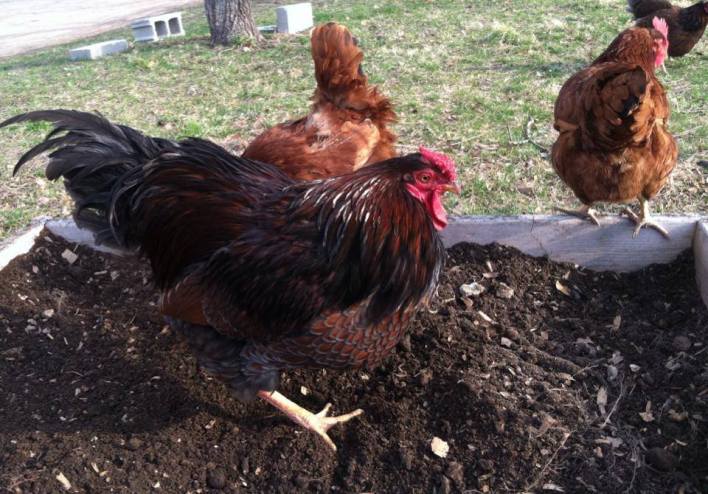
After I planted my first batch of peas, my chickens lovingly scratched them all up. *sigh* They didn’t get the memo that the tilling season is over, and planting season has begun. The beds now have chicken wire laying on them.

Since I’ve transformed my raised beds in to cool weather beds, I need somewhere to put all those tomato plants and everything else I hope to grow. So, I’ve tarped off this 16 foot by 30 foot sunny spot to hopefully make into my larger garden. I haven’t decided if I will till it or do no-till, raised rows. It kinda depends on how fast the grass dies.

Here is one of the nine fruit trees I planted. I tried to photograph the whole lot, but it just looked like an ugly field full of sticks. I need to get some mulch on them sometime before summer. They came bareroot from Stark Brothers Nursery in Louisanna, Missouri. We have two apple, two pear, three peach and two cherry. I know not all of them will live, but I hope most do.

The new chicken house is coming along. Since this is a refurbished playhouse, it’s been difficult logistically to do some of what we need to. We pained the side boards…

Installed these windows… Note: we found some windows at Lowes that just about fit the holes perfect-ish. We just had to fill in with a little bit of caulking, so you couldn’t see daylight. Also, we had to install the windows inside-out, because 1. the siding was already put on, and it would have been difficult for us non-carpenters to remove it to install the window and 2. The inside of the coop will have hardware cloth covering all the holes, so there would be no way to unlock and open the window if it was put in like it was supposed to. We cut trim to go around them, so it won’t be such an eyesore. You can see some of the pre-painted trim above.

Which brings me to the next item. I’ve been painting lots of trim for the coop! Excuse our messy garage.
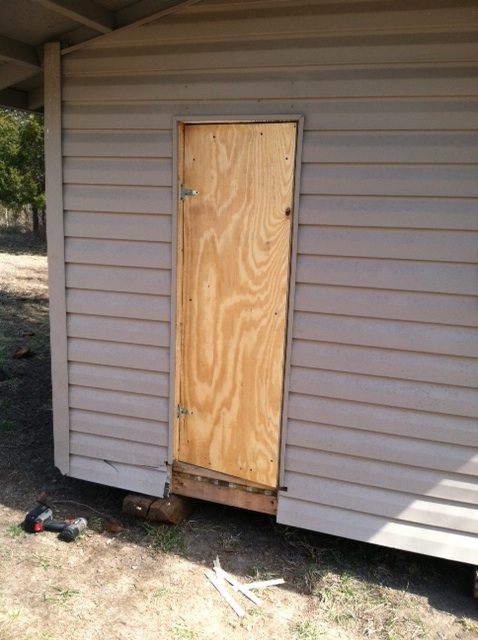
We’ve also built a couple doors for the coop. The front door, which can be seen from the house and driveway is this the one above.

And this is the back door, which is split into two parts. The top part will latch to a hook above, and the bottom part will fold down for a ramp for the chickens. I have all the door components painted, but no photo. The doors will be the same color as the siding, and the trim is white.

I also assembled my hive. I have the paint, but still need to paint it.

I have another deep and two supers that also need to be assembled. They are still laying in my living room floor.

My chickens have had it pretty rough lately with an overly-ambitious rooster. Lots of feathers missing from their heads and backs. We decided to get more laying hens as soon as we get the new coop and run finished, then we’ll have the six chicks coming in May. Chicken math is real, people!

There are a few other things going on around the homestead, but I’ll leave you with that for now. What’s going on at your house?
























